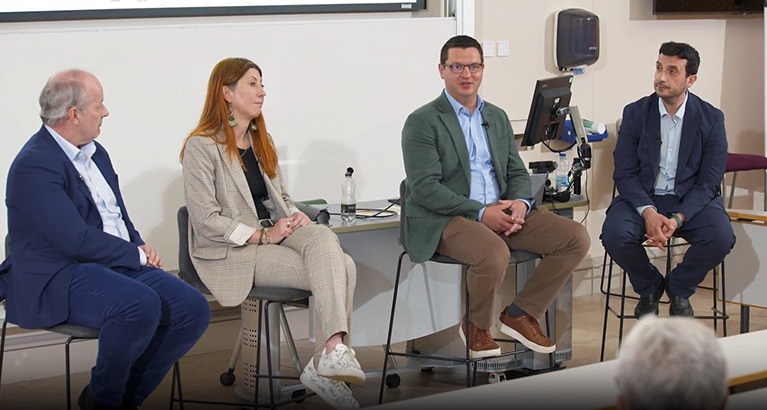Companies all over the world are wrestling with how to convince employees to adopt exciting new practices such as artificial intelligence (AI), virtual reality and other digital tools billed as the gateways to a successful future.
Managing change is nothing new: companies have long faced obstacles in trying to introduce new operational practices that substitute for existing ones, with inertia and complacency being primary roadblocks. But the sheer pace of change in the digital era means that companies face pressure to change quickly, requiring all employees to rapidly adopt new techniques or risk leaving the firm hopelessly behind.
Or do they?
Other ways managers can adopt AI
A new study led at Cambridge Judge Business School focuses on social comparisons between employees in encouraging managers to consider a broader range of outcomes beyond the traditional non-adoption versus full-adoption dichotomy regarding these new technologies.
One type of social comparison (labelled in the study as ahead-seeking) may lead employees to differentiate their choices from those of others, while another type of social comparison (labelled as behind-averse) creates a bandwagon effect that determines adoption based on an early group of adopters trained upfront in a new practice.
Based on this, the study forthcoming in the leading journal Management Science outlines 2 types of new-practice adoption regimes – coexistence, in which different practices are used by different employees, and bistability, in which there is either full adoption or no adoption at all of new practices depending on the initial number of employees trained upfront in the new practice.
Why managers should match rewards and training to social comparison

The study then offers a ’map’ to managers in successfully navigating these different pathways by using 2 key operational levers: adoption rewards and training.
Under optimal actions from senior management, firms may pursue a profitable partial adoption through the coexistence route “and avoid an uneconomical full adoption of the new practice,” the study says. “Profitable adoption critically relies upon matching rewards and training to the type of social comparison.”
The study is co-authored by Antoine Feylessoufi, a PhD graduate of Cambridge Judge Business School who is now a Research Fellow at University College London; Stelios Kavadias, Margaret Thatcher Professor of Enterprise Studies in Innovation & Growth at Cambridge Judge; and Danny Ralph, Professor of Operations Research at Cambridge Judge.
The study says that previous research into organisational ability to profitably adapt new practices had emphasised the effect of ‘externalities’ – the more the adopters, the higher the value of adoption and “social learning.”. The new study focuses instead on the ‘overlooked’ dynamic of social comparisons between employees.
Economic returns are only one factor for employees

“Employees do not realise just absolute economic returns, which depend on the success of using the new practice; they also accrue (behavioural) utility as a result of their performance relative to their peers,” the study says. “Senior managers, who introduce the new practice, might set suboptimal policies should they overlook or dismiss the presence of such social dynamics.”
Adds co-author Antoine Feylessoufi: “The study recognises that successful adoption of new technologies such as AI or the use of new sustainable practices are essential to profits and productivity, and that employees need to broadly buy into how such new practices are implemented. But we caution that companies shouldn’t charge into adoption of such new practices without accounting for behavioural factors that determine employee choices as such practices are introduced. And, when they do, firm management may have to set different combinations of adoption rewards and training to achieve profitable adoption which critically depend on the type of social comparison present in the organisation.”
Study offers 3 key takeways for implementing new technology
1
A ‘trichotomy’ of outcomes – full adoption, no adoption and coexistence – “should be on the radar of senior management”.
2
Enforcement of a full-adoption logic induced by sizeable rewards “might impose, oftentimes, suboptimality”.
3
Upfront training to prime employees to attempt a new practice, at least initially, can be an ’important lever’ for senior management to induce wider adoption. However, its effectiveness is impacted by the type of social comparison present in the organisation. In such cases, firm management may choose to either complement or fully replaced it with adoption rewards.
Featured faculty
Stelios Kavadias
Margaret Thatcher Professor of Enterprise Studies in Innovation and Growth
Featured research
Feylessoufi, A., Kavadias, S. and Ralph, D.(2023) “Behavioral microfoundations of new practice adoption: the effects of rewards, training and population dynamics.” Management Science (forthcoming)





